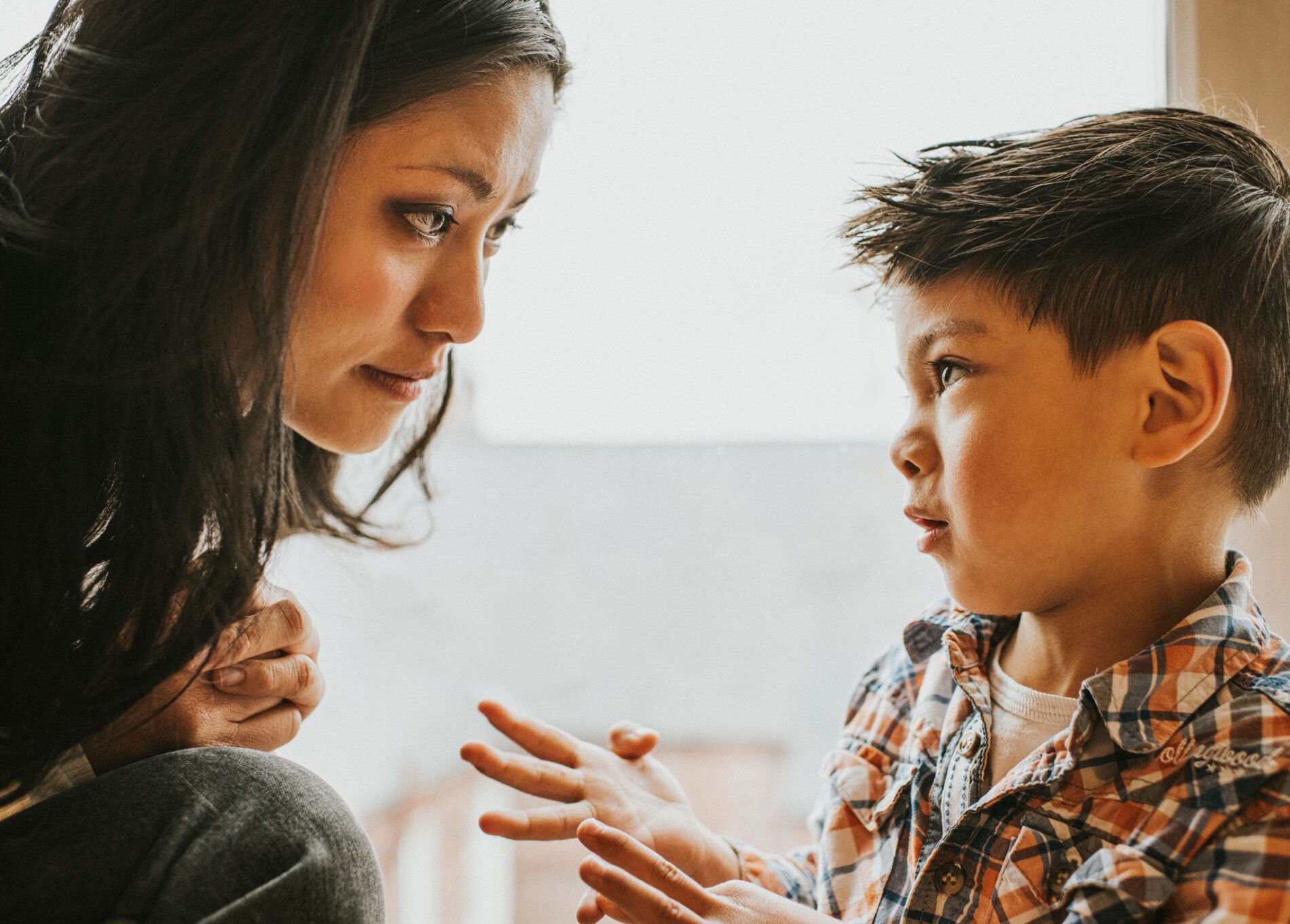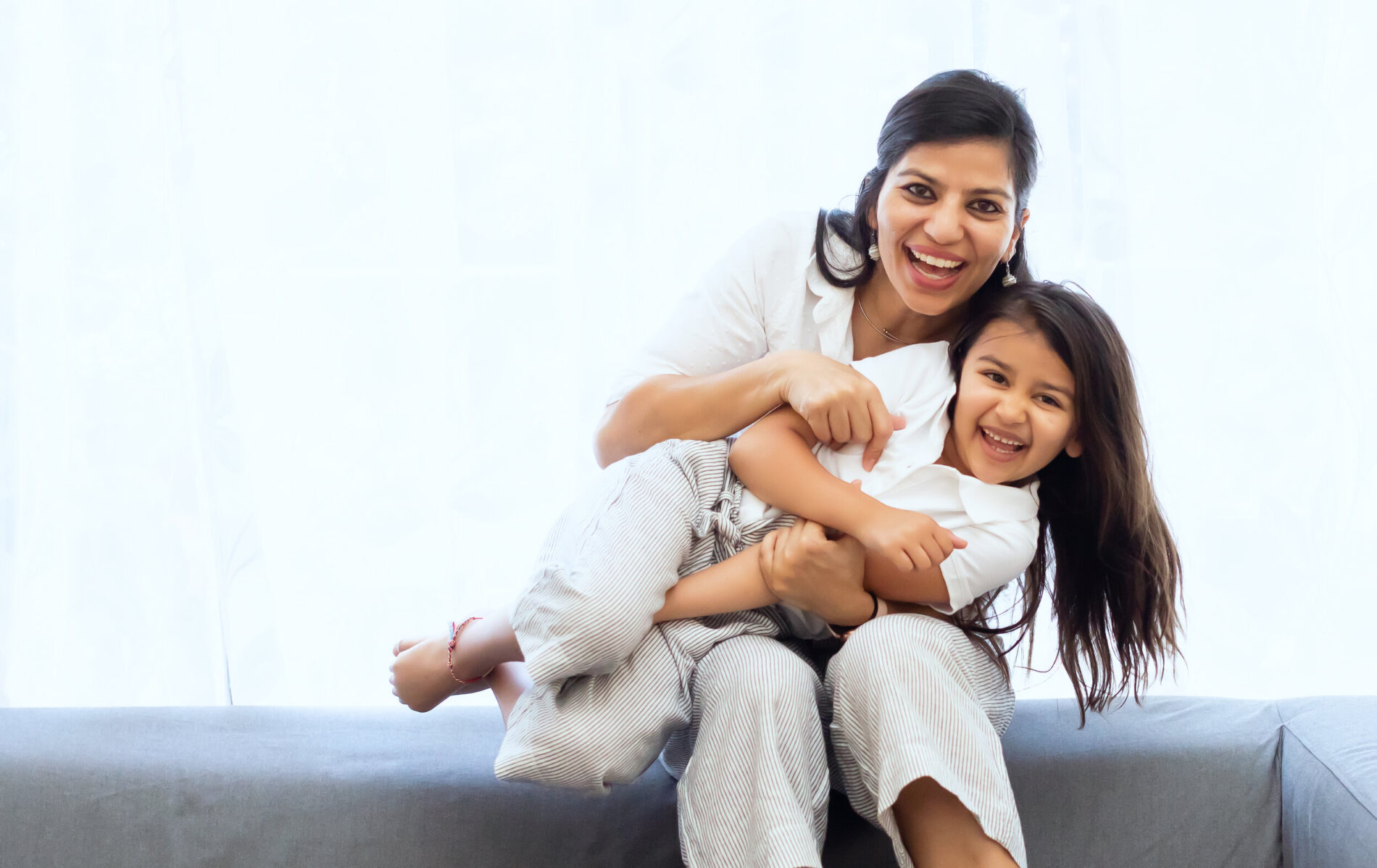If you are a parent, then you know that raising children can be a daunting task. There are so many things to worry about, and it seems like the challenges never end. One thing that can help make the parenting process a bit easier is PCIT therapy. PCIT stands for Parent-Child Interaction Therapy, and it is a type of counseling that can help improve your relationship with your child. In this blog post, we will discuss what PCIT therapy is, and how it can help you become a better parent.
Contents
- 1 What Is PCIT Therapy?
- 2 Phases of PCIT Therapy
- 3 Techniques of PCIT Therapy
- 3.1 Praise
- 3.2 Command
- 3.3 Time-Out
- 3.4 Reinforcement
- 3.5 Encouragement
- 3.6 Eye contact
- 3.7 Therapeutic holding
- 3.8 Physical affection
- 3.9 Verbal commands
- 3.10 Nonverbal commands
- 3.11 Facial expressions
- 3.12 Body language
- 3.13 Using “I” statements
- 3.14 Active listening
- 3.15 Reflective listening
- 3.16 Open-ended questions
- 3.17 Closed-ended questions
- 3.18 Behavioral rehearsal
- 3.19 Reflections
- 3.20 Consistency
- 3.21 Incentives
- 4 Working on PCIT Therapy
- 5 Sessions of PCIT Therapy
- 6 Benefits of PCIT Therapy
- 6.1 Improves Communication Between Parents And Children
- 6.2 Fosters A More Positive Parent-Child Relationship
- 6.3 Helps Parents And Children To Manage Their Emotions
- 6.4 Builds A Stronger Parent-Child Relationship
- 6.5 Reduces negative behaviors in children
- 6.6 Makes Parenting More Enjoyable
- 6.7 Gives Parents And Children The Tools They Need
- 7 Limitations of PCIT Therapy
- 8 Tips To Keep In Mind While Taking PCIT Therapy
- 9 How To Select PCIT Therapy Therapist?
- 10 Conclusion
What Is PCIT Therapy?
 PCIT therapy is a type of therapy that is used to help children who have been through traumatic experiences. It is a short-term therapy that can help children to cope with their trauma and to learn how to deal with it in a healthy way. PCIT therapy can be used for children who have been through any type of trauma, including physical or emotional abuse, neglect, or witnessing violence.
PCIT therapy is a type of therapy that is used to help children who have been through traumatic experiences. It is a short-term therapy that can help children to cope with their trauma and to learn how to deal with it in a healthy way. PCIT therapy can be used for children who have been through any type of trauma, including physical or emotional abuse, neglect, or witnessing violence.
PCIT therapy is also a type of therapy that can help children who have been through a divorce or other family changes. This type of therapy can help children to understand their feelings and to cope with the changes in their lives.
PCIT therapy is a short-term therapy, which means that it is typically only used for a few months. However, it can be helpful for children to continue to see a therapist after PCIT therapy has ended. This is because PCIT therapy can help children to learn skills that they can use for the rest of their lives. Many times, children who go through PCIT therapy have very positive outcomes and are able to lead healthy, happy lives.
Phases of PCIT Therapy

There are many different phases of PCIT therapy. These phases are also:
Engagement Phase
The engagement phase is all about building a trusting relationship with your child. In this phase, the therapist will help you to understand your child’s behavior and how to respond to it in a way that is helpful. The engagement phase is a very important part of PCIT therapy because it helps to set the stage for the rest of the therapy. PCIT therapy is also a very structured therapy, which means that the therapist will be working with you and your child on a specific schedule.
Child-Directed Interaction Phase
The child-directed interaction phase is all about helping your child to feel comfortable with the therapist. In this phase, the therapist will help your child to interact with them in a way that is natural and fun. This phase is also a very important part of PCIT therapy because it helps to build trust between your child and the therapist. This phase of PCIT therapy usually lasts for six to eight weeks.
Parent-Directed Interaction Phase
Parent-directed intervention (PDI) is the first phase of PCIT. In this phase, therapists coach parents on how to deliver commands and praise in an effective way. They also help parents learn how to be attuned to their child’s emotions. The goal of PDI is to establish a positive and trusting relationship between parent and child. This phase also teaches parents how to effectively use time-out as a disciplinary tool.
Also in this phase, parents learn about the different types of reinforcement that can be used to decrease problem behavior. They also learn how to implement these techniques in a way that is developmentally appropriate for their child.
The final phase of PCIT, Child-Directed Interaction (CDI), builds on the skills learned in PDI. In CDI, parents are taught how to respond to their child’s emotions in a way that is supportive and empathetic. They also learn how to provide structure and limits while still allowing their child some control over the interaction. This phase helps parents balance their need for control with their child’s need for autonomy.
Techniques of PCIT Therapy

There are many different techniques of PCIT therapy. The most common techniques are the following:
Praise
Praise is one of the most important aspects of PCIT. It is used to reinforce positive behaviors and increase the likelihood of those behaviors being repeated. Also, praise can be used to increase a child’s self-esteem and sense of competence. This technique also helps parents to build a positive relationships with their children.
Command
Commands are used to direct a child’s behavior in a specific way. They should be clear, concise, and age-appropriate. Commands should also be given in a calm and assertive voice.
Time-Out
Time-out is a disciplinary technique that is used to remove a child from an environment where they are engaging in problem behavior. It is important that time-outs are used consistently and appropriately in order to be effective. Also, time-outs should not be used as a punishment but rather as a way to provide structure and limits for the child.
Reinforcement
Reinforcement is used to increase desired behaviors and decrease undesired behaviors. The most common type of reinforcement is positive reinforcement, which is used to increase desired behaviors. Negative reinforcement is also a type of reinforcement but it should be used sparingly as it can increase problem behavior.
Encouragement
Encouragement is used to support a child’s efforts and help them persevere in the face of challenges. It is important that encouragement is genuine and specific. Also, encouragement should be given in a way that is developmentally appropriate for the child.
Eye contact
Eye contact is an important aspect of PCIT. It is used to establish rapport and build trust between parent and child. It also helps parents to be attuned to their child’s emotions. Also, it makes it possible for the parent to give commands and praise in an effective way.
Therapeutic holding
Therapeutic holding is a physical intervention that is used to provide comfort and support to a child. It should only be used when a child is in distress and not as a form of discipline. Therapeutic holding should be done in a way that is safe and developmentally appropriate for the child.
Physical affection
Physical affection is also an important aspect of PCIT. It is used to show love and support for the child. Physical affection should be given in a way that is developmentally appropriate for the child and should not be used as a form of discipline.
Verbal commands
Verbal commands are used to direct a child’s behavior in a specific way. They should be clear, concise, and age-appropriate. Commands should also be given in a calm and assertive voice.
Nonverbal commands
Nonverbal commands are also used to direct a child’s behavior in a specific way. They can be helpful when verbal commands are not effective or when the child is nonverbal. Nonverbal commands should be clear and concise.
Facial expressions
Facial expressions are important for communication and building rapport with the child. They can also help parents to be attuned to their child’s emotions. Facial expressions should be genuine and appropriate for the situation.
Body language
Body language is an important form of communication that can help parents to be attuned to their child’s emotions. It can also help parents to give commands and praise in an effective way. Body language should be developmentally appropriate for the child.
Using “I” statements
Also, “I” statements are used to help parents to communicate in a way that is respectful and non-blaming. “I” statements should be used when giving commands, praise, or encouragement. It may also be helpful to use “I” statements when discussing problem behavior with the child.
Active listening
Active listening is a way of listening that is characterized by full attention, empathy, and understanding. It is an important skill for parents to learn in order to be effective communicators with their children.
Reflective listening
Reflective listening is a way of listening that is characterized by full attention, empathy, and understanding. It is an important skill for parents to learn in order to be effective communicators with their children. Reflective listening involves repeating back what the child has said in order to clarify understanding.
Open-ended questions
Open-ended questions are used to encourage communication and help parents to understand their child’s thoughts and feelings. They should be used when there is no right or wrong answer. Open-ended questions should be developmentally appropriate for the child.
Closed-ended questions
Closed-ended questions are used to get specific information from the child. They should be used when there is a right or wrong answer. Closed-ended questions should be developmentally appropriate for the child.
Behavioral rehearsal
Behavioral rehearsal is a way of practicing new skills that involve role-playing and modeling. It is an important tool for parents to use in order to learn new skills. Behavioral rehearsal should be done in a way that is safe and developmentally appropriate for the child.
Reflections
Reflections are used to help parents to understand their child’s thoughts and feelings. They should be used when there is no right or wrong answer. Reflections should be developmentally appropriate for the child. It may also be helpful to use reflections when discussing problem behavior with the child.
Consistency
It is important for parents to be consistent when using PCIT skills. This means that the same skills should be used across different situations and with different people. Consistency will help the child to learn new skills more quickly and effectively. There may also be times when it is necessary to be flexible in order to meet the needs of the child.
Incentives
Incentives are used to encourage desired behavior by offering rewards for good behavior. Also, Incentives should be developmentally appropriate for the child. They should also be given in a way that is consistent with the child’s age and developmental level. Incentives should be used sparingly and only for desired behavior that has been learned.
These are just some of the techniques that are commonly used in PCIT therapy. Your therapist may use other techniques as well, depending on your specific needs.
Working on PCIT Therapy
 The working of PCIT therapy is based on four main pillars which are as follows:
The working of PCIT therapy is based on four main pillars which are as follows:
– The first pillar is called the “Child-Directed Interaction” in which the therapist works with the parent and child together to help improve their relationship.
– The second pillar is known as “Parental Management Training” which helps parents learn how to better manage their children’s behavior.
– The third pillar is called “Coaching Parents Through Play” and it helps parents learn how to coach their children through playtime so that they can improve their social skills.
– Lastly, the fourth pillar is referred to as “Therapist Modeling” where the therapist will model appropriate behaviors for both the parent and child. PCIT therapists typically use a combination of all four pillars to help families improve their relationships.
If you are interested in learning more about PCIT therapy or think it could be helpful for you and your family, please speak with a mental health professional.
Sessions of PCIT Therapy
 The sessions of PCIT therapy are usually around 45 to 50 minutes long. In each session, the therapist will work with you and your child on a specific skill.
The sessions of PCIT therapy are usually around 45 to 50 minutes long. In each session, the therapist will work with you and your child on a specific skill.
The skills that are worked on during therapy depend on the needs of you and your child but can include things such as how to respond to tantrums, how to have positive interactions with your child, or how to deal with difficult behaviors.
PCIT therapy is typically done in weekly sessions for a period of 12 to 24 weeks. The number of sessions and length of time will be determined by the therapist based on the needs of you and your child.
After completing PCIT Therapy, parents report feeling more confident in their parenting skills, less stress in their daily lives, and improved relationships with their children. A therapist may also recommend other resources or services to help you and your child after PCIT therapy is completed.
Benefits of PCIT Therapy

There are many benefits of PCIT therapy. Some of these are:
Improves Communication Between Parents And Children
Communication is essential for every relationship. PCIT therapy can help parents and children to communicate more effectively with each other. This improved communication can lead to a stronger parent-child relationship. There may be also many other benefits that come from this improved communication such as fewer behavioral problems and a deeper connection between parents and children.
Fosters A More Positive Parent-Child Relationship
PCIT therapy can help to foster a more positive parent-child relationship. This is because the therapy helps parents and children to communicate more effectively with each other. When communication is improved, it can lead to a stronger parent-child relationship.
Helps Parents And Children To Manage Their Emotions
PCIT therapy can also help parents and children to manage their emotions better. This is because the therapy helps them to communicate more effectively with each other. When communication is improved, it can lead to a better understanding of each other’s emotions. This understanding can help to manage emotions better.
Builds A Stronger Parent-Child Relationship
PCIT therapy can help to build a stronger parent-child relationship. This is because the improved communication that results from PCIT therapy can help to create a more positive and supportive environment between parents and children. It may also help to reduce conflict within the parent-child relationship.
Reduces negative behaviors in children
PCIT therapy has been shown to reduce negative behaviors in children, such as aggression, tantrums, and noncompliance. These reductions in negative behaviors can lead to a calmer home environment and less stress for both parents and children. There are also many other benefits that come from reducing negative behaviors, such as improved communication and a stronger parent-child relationship.
Makes Parenting More Enjoyable
PCIT therapy can also make parenting more enjoyable. This is because the improved communication and stronger parent-child relationship that results from PCIT therapy can help to reduce stress and conflict. When there is less stress and conflict, parenting can be more enjoyable. There are also many other benefits that come from making parenting more enjoyable, such as improved communication and a stronger parent-child relationship.
Gives Parents And Children The Tools They Need
PCIT therapy gives parents and children the tools they need to improve communication and build a stronger parent-child relationship. These tools can help to reduce stress, conflict, and negative behaviors. They can also help to make parenting more enjoyable.
PCIT therapy is an effective treatment for many families, and it can have lasting benefits for both parents and children. It also provides parents and children with the tools they need to improve communication and build a stronger parent-child relationship. If you are struggling in your parent-child relationship, PCIT therapy may be able to help.
Limitations of PCIT Therapy
There are many limitations of PCIT therapy. Some of these are:
Time-Consuming
One of the main limitations of PCIT therapy is that it can be time-consuming. The therapist and the parent need to meet for weekly sessions, which can last up to two hours. In addition, there are usually homework assignments that need to be completed between sessions.
Costly
Another limitation of PCIT therapy is that it can be costly. The average cost per session is $100-$200, and most insurance companies do not cover this type of therapy. Sometimes there can be a sliding scale fee, but this is not always available.
Requires Parent Training
PCIT therapy requires that the parent undergoes training in order to learn the necessary skills. This can be difficult for some parents, who may not have the time or resources to commit to this type of training.
Location
Another limitation of PCIT therapy is that it can be difficult to find a therapist who is certified in this type of therapy. PCIT therapists are typically located in larger cities, so it may not be an option for those who live in rural areas.
Despite these limitations, PCIT therapy can be a helpful treatment option for families who are struggling with behavioral issues. If you think your family might benefit from this type of therapy, talk to your doctor or a mental health professional to see if it is the right option for you.
Tips To Keep In Mind While Taking PCIT Therapy

There are many tips that you should keep in mind while taking PCIT therapy. Some of these are:
Be Honest With Therapist
You should always try to be honest with your therapist. This is because they are trying to help you and if you’re not honest, it will be harder for them to do so. Honesty is one thing that can help make therapy successful.
Attend All Sessions
It is important that you attend all of your sessions. This is because each session builds on the last and if you miss a session, it can be difficult to catch up. In addition, it is important to be consistent with therapy in order to see results.
Complete Homework Assignments
Another tip to keep in mind while taking PCIT therapy is to complete your homework assignments. These assignments are designed to help you practice the skills you are learning in therapy. If you do not complete them, it will be harder to make progress in therapy.
Give It Time
PCIT therapy is not a quick fix. It takes time to learn the skills and make changes. Be patient with yourself and the process. Trust that PCIT therapy can help you and your family make lasting changes.
If you are considering PCIT therapy, talk to your doctor or a mental health professional to see if it is right for you. And if you do decide to go through with it, keep these tips in mind to help make the process successful.
MantraCare is a website that provides mental health resources. If you or someone you know is struggling with a mental health issue, please visit our website for more information.
How To Select PCIT Therapy Therapist?

Selecting a PCIT therapy therapist is not always an easy task. You want to make sure that the therapist is someone who you feel comfortable with and can trust. There are a few things to keep in mind when looking for a PCIT therapist.
-First, it is important that the therapist is trained in PCIT specifically. This type of therapy is not like other types of therapy, so it is important that the therapist has experience and training in this specific area.
-Second, you want to make sure that the therapist has experience working with children. This is important because PCIT therapy focuses on helping children learn how to cope with their emotions.
-Third, you want to find a therapist who is willing to work with you on an individual basis. This means that the therapist should be willing to meet with you on a regular basis and work with you to help you reach your goals.
-Fourth, it is important to find a therapist who is flexible and willing to work around your schedule. This is important because PCIT therapy can be very time-consuming.
-Finally, it is important to find a therapist who accepts insurance. This is important because PCIT therapy can be expensive and you want to make sure that you are able to afford the therapy.
When looking for a PCIT therapist, it is important to keep these things in mind. By doing so, you will be able to find a therapist who is right for you and your family.
Conclusion
PCIT therapy is an incredibly beneficial form of therapy for parents and children alike. It can help to improve the parent-child relationship, communication skills, and overall family dynamic. If you’re looking for a way to improve your family’s life, PCIT therapy may be the perfect solution for you.
If you are looking for affordable Online Counseling MantraCare can help: Book a trial therapy session


